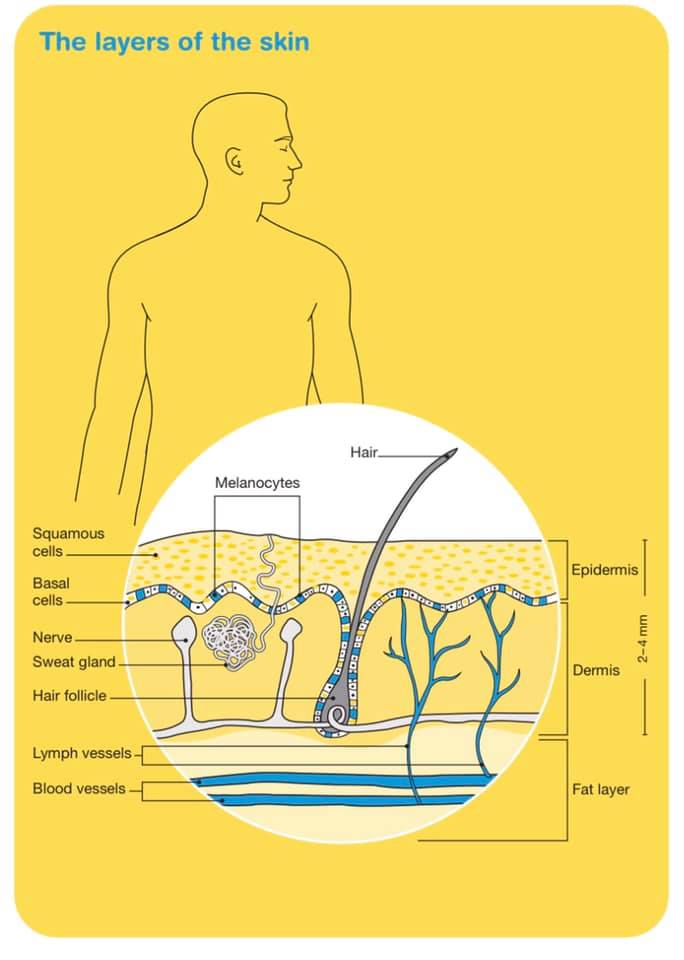Understanding Skin

October 3, 2020
5:34 pm
5:34 pm
The skin is the largest organ of the body. It acts as a barrier to protect the body from injury, control body temperature and prevent loss of body fluids.
The two main layers of the skin are the epidermis and dermis. Below these is a layer of fatty tissue.
Epidermis
This is the top, outer layer of the skin. It is made up of several cell types:
Squamous cells – These flat cells are packed tightly together to make up the top layer of skin. They form the thickest layer of the epidermis.
Basal cells – These block-like cells make up the lower layer of the epidermis. The body makes new basal cells all the time. As they age, they move up into the epidermis and flatten out to form squamous cells.
Melanocytes – These cells sit between the basal cells and produce
a dark pigment called melanin, the substance that gives skin its colour. When skin is damaged by ultraviolet (UV) radiation, melanocytes make extra melanin. Melanocytes are also found in non-cancerous spots on the skin called moles or naevi
Dermis
This layer of the skin sits below the epidermis. The dermis contains the roots of hairs (follicles), sweat glands, blood vessels, lymph vessels and nerves. All of these are held in place by collagen and elastin, the proteins that give skin its strength and elasticity.
Become familiar with the look of your skin, so you pick up any changes that might suggest a skin cancer. Look for:
any crusty, non-healing sores
small lumps that are red, pale or pearly in colour
new spots, freckles or any moles changing in colour, thickness or shape over a period of weeks to months
Preventing skin cancer
Protect your skin
For best protection, when the UV level is 3 or above, we recommend a combination of sun protection measures:
Slip on some sun-protective clothing – that covers as much skin as possible.
Slop on broad spectrum, water resistant SPF30 sunscreen. Put it on 20 minutes before you go outdoors and every two hours afterwards. Sunscreen should never be used to extend the time you spend in the sun.
Slap on a hat – that protects your face, head, neck and ears.
Seek shade.
Slide on some sunglasses – make sure they meet Australian standards.
Be extra cautious in the middle of the day when UV levels are most intense.
